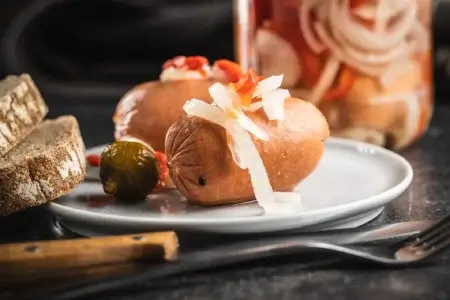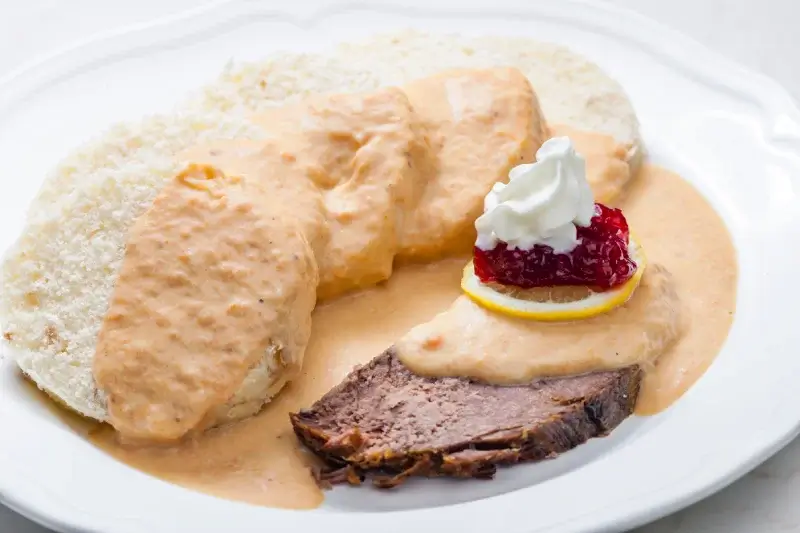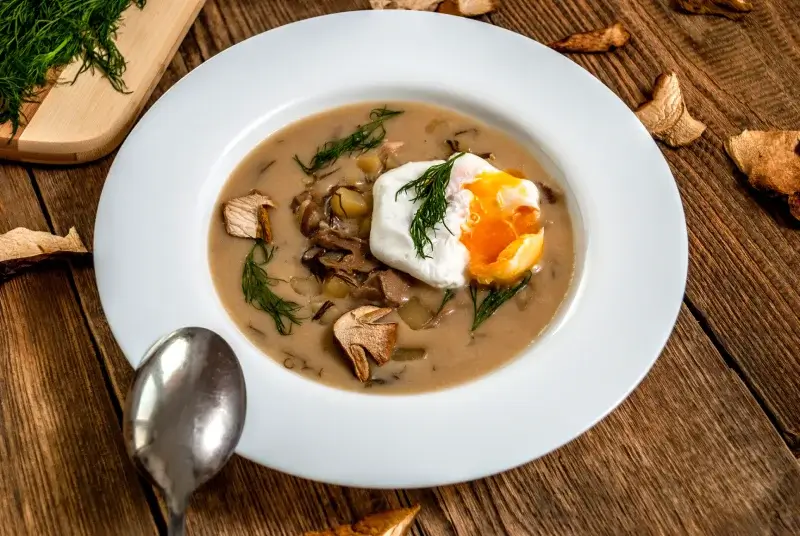Czech cuisine is partially influenced by the cuisines of its neighbors, primarily German and Hungarian. Traditional Czech cuisine, unlike Mediterranean cuisines, is heavier and less digestible, dominated by animal fats, meat, and flour. However, this is gradually changing, with healthy eating trends becoming more prominent.
In Prague and throughout the Czech Republic, traditional Czech restaurants are emerging, offering roasted and grilled meats, soups served in bread loaves, and similar dishes. Nevertheless, Czech cuisine features many excellent dishes that are more commonly known from home cooking and passed down from our ancestors.
Czech cuisine likely needs little introduction, but let’s nonetheless highlight some key aspects and explore current trends in so-called Czech and traditional Czech restaurants.
The key components of Czech cuisine include meat—pork, beef, poultry, rabbit, and game. Among freshwater fish, carp is the most notable, primarily consumed during the Christmas holidays, along with less common trout, pike-perch, and eel. Other important ingredients include vegetables, fruits, legumes, mushrooms, dairy products, grains, baked goods, vegetable and animal fats, spices, herbs, and last but not least, Czech beer.


Czech cuisine also features a wide variety of soups, which are served as the first course. Following that are traditional sauces with dumplings, dishes made from mushrooms or eggs, and, not least, an array of baked sweet desserts.
Sauces and dumplings are a Czech specialty. Sauces typically include cream, butter, and flour. There are many types of dumplings, such as bread dumplings, potato dumplings, „hairy“ dumplings, or dumplings filled with smoked meat or fruit.
Among delicacies, we can mention open-faced sandwiches, various salads, aged cheeses, and Prague ham.
In terms of spices, Czech cuisine often uses pepper, caraway, allspice, and bay leaves. Among herbs, lovage, lemon balm, savory, marjoram, sage, dill, and garlic are common.
Vegetables in the Czech climate are largely seasonal and are often pickled or preserved. Historically, they were mainly served cooked, but nowadays salads and fresh vegetables are increasingly popular. The most common vegetables include potatoes, cucumbers, tomatoes, onions, spinach, parsley, celery, carrots, and radishes.
Fruits most commonly used in cooking are apples, plums, pears, rowanberries, cherries, strawberries, raspberries, currants, and apricots.
Beer
Beer is the most popular alcoholic beverage in the Czech Republic, with a tradition and quality refined over centuries. Across the country, there are many small and large breweries producing the unique Czech lager (a beer brewed using bottom fermentation). The most famous Czech beers are Pilsner Urquell and Budvar.
Beer is often accompanied by small delicacies, primarily sausages and cheeses. Beer consumption is the specialty of so-called beer halls (pivnice), where the food menu is often limited to just a few dishes.
Where to Get a Beer in Prague
Svíčková na smetaně is one of the most popular Czech dishes. It features roasted beef larded with bacon and topped with a creamy sauce made from root vegetables, served with dumplings. Many other creamy sauce variations are served with beef and dumplings, such as dill sauce made from fresh dill (koprová omáčka), horseradish sauce (křenová omáčka), paprika sauce, or tomato sauce (rajská omáčka).
Vepřová pečeně se zelím a knedlíkem (Vepřo knedlo zelo) is the Czech national dish, consisting of roasted pork served with cooked pickled red or white cabbage and dumplings.
Dršťková polévka is a hearty soup made from pre-cooked tripe (parts of beef stomach), root vegetables, marjoram, and garlic.
Jehněčí kýta se špenátem, roasted lamb leg with garlic and rosemary, is typically served with spinach or spinach purée and dumplings.
Smažený řízek is a breaded and fried slice of pork, veal, or chicken, coated in flour, egg, and breadcrumbs, served with boiled potatoes or potato salad.
Polévka s nudlemi a játrovými knedlíčky is a beef broth with vegetables, noodles, and liver dumplings. It is one of the most common soups, traditionally served as a festive first course, for example, at weddings.
Guláš, originally a Hungarian dish, has become a staple in Czech cuisine. It is a stew of meat, usually beef, cooked with vegetables and seasoned with ground paprika, typically served with bread or dumplings.
Zelňačka is a thick soup made from sauerkraut, potatoes, and smoked meat or sausage.
Roasted duck or goose is a beloved Czech specialty, served with braised pickled cabbage, dumplings, and crushed caraway seeds. The duck or goose is sometimes glazed with honey.
Kulajda is a thick soup made from mushrooms, fresh dill, potatoes, and sour cream.
Smaženice consists of sautéed fresh mushrooms with onions, garlic, and eggs, usually eaten with toasted bread.
Bramboráky are fried potato pancakes made from grated raw potatoes, smoked meat, and spices such as marjoram and pepper.
Grilled pork knuckle is not a traditional Czech specialty but has become a common dish in modern Czech restaurants. It is marinated pork knuckle grilled and served with bread, mustard, and horseradish. A less common version is smoked grilled pork knuckle. Hovězí tatarák (beef tartare) is finely chopped or ground raw beef tenderloin mixed with spices and a raw egg, served with toasted bread. In French cuisine, it is often accompanied by fries.
Czech cuisine is rich in the previously mentioned „beer snacks,“ such as pickled camembert, utopenci, matesy and zavináče (pickled fish), spread made from beer cheese, and head cheese.
Pork offal is often used to make cooked products: head cheese, blood sausages, liver sausages, or pig slaughter soup.



